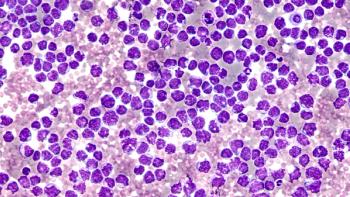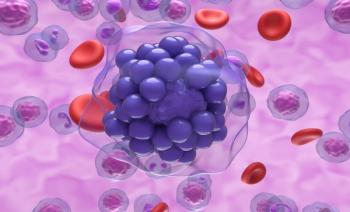
Neoaduvant Immunochemotherapy May Improve Outcomes in LS-SCLC
Key Takeaways
- Neoadjuvant immunochemotherapy shows higher pCR and MPR rates compared to chemotherapy alone in LS-SCLC patients, suggesting enhanced tumor regression before surgery.
- Propensity score matching indicates significantly prolonged PFS and OS in the immunochemotherapy group compared to chemotherapy and CCRT groups.
Previous research has evaluated PD-1/PD-L1 immunotherapy in patients with extensive-stage small cell lung cancer (ES-SCLC), but research in the setting of limited-stage disease is sparse.
Neoadjuvant immunochemotherapy may offer superior outcomes compared to concurrent chemoradiotherapy (CCRT) in patients with limited-stage small cell lung cancer (LS-SCLC), according to a new report.
The data suggests immunochemotherapy generates improved response rates and may prolong survival. The study was
Patients with SCLC have a poor prognosis, with a
Patients with LS-SCLC are usually treated with CCRT, which has been shown to improve survival rates compared to chemotherapy alone. Yet, the authors said the improvement has been insufficient.
“Despite the high responsiveness of LS-SCLC to chemoradiotherapy and a remission rate of 10% after 2 years, relapse is inevitable in these patients,” they noted.
Recently, trials have investigated the potential utility of immunotherapy targeting the PD-1/PD-L1 pathway in patients with SCLC. For instance, the
Another question is what role surgery should play in the treatment of SCLC. The investigators said it appears to be becoming more common as an LS-SCLC treatment, though guidelines currently recommend it be limited to patients with stage I-IIA disease.
Amidst these shifts and emerging data, the authors sought to better understand the impact of neoadjuvant chemoimmunotherapy in patients with LS-SCLC whose tumors were potentially resectable. They retrospectively identified 139 patients who received treatment between 2019 and 2023. Among those, 55 patients received CCRT, and the other 84 were given neoadjuvant therapy followed by surgery. Most who underwent surgery (56 patients) were given neoadjuvant chemotherapy, but the other 28 patients received neoadjuvant immunochemotherapy. The authors said baseline characteristics and neoadjuvant treatment characteristics were not significantly different between the groups.
All patients who underwent surgery achieved complete resection, they noted. However, both the pathological complete response (pCR) rate and the major pathological response (MPR) rate were higher in patients who underwent immunochemotherapy compared to the chemotherapy group. The immunochemotherapy group has a pCR rate of 35.7% compared to 7.1% in the chemotherapy group (P < .05).
“The MPR rate followed a similar trend, further suggesting a potential benefit of adding PD-1/PD-L1 inhibitors to enhance tumor regression before surgery,” they authors said.
The MPR rate in the immunochemotherapy group was 53.6%, compared to 12.5% for the chemotherapy group (P < .05).
The authors used propensity score matching to compare survival among 24 patients from each group. Median OS and median progression-free survival (PFS) were not met in the immunochemotherapy group, but the authors said a Kaplan-Meier analysis suggests immunochemotherapy led to "significantly prolonged” PFS and OS over both the chemotherapy group and the CCRT group.
The authors said adverse events and safety data were similar among all 3 groups.
“These findings support the potential of adding immunotherapy to neoadjuvant strategies to improve clinical outcomes in patients with SCLC,” they concluded. The authors added, however, that these findings will need to be replicated in larger, prospective randomized controlled clinical trials.
References
1. Zhao Z, Rong H, Li M, et al. Clinical outcomes for neoadjuvant immunochemotherapy or chemotherapy versus concurrent chemoradiotherapy in limited-stage small-cell lung cancer: A retrospective, multi-center, real-world study. Int J Cancer. Published online September 13, 2025. doi:10.1002/ijc.70153
2. American Cancer Society. 5-Year survival rates for lung cancer. Cancer.org. Updated 2025. Accessed October 19, 2025.
3. Goldman JW, Dvorkin M, Chen Y, et al. Durvalumab, with or without tremelimumab, plus platinum-etoposide versus platinum-etoposide alone in first-line treatment of extensive-stage small-cell lung cancer (CASPIAN): updated results from a randomised, controlled, open-label, phase 3 trial. Lancet Oncol. 2021;22(1):51-65. doi:10.1016/S1470-2045(20)30539-8
Newsletter
Stay ahead of policy, cost, and value—subscribe to AJMC for expert insights at the intersection of clinical care and health economics.













































